Devotion – Part 4: Italy
Chapter 11: Florence
The city of Florence started out as a Roman city, established by Julius Caesar in 59 BCE. From 1865 until 1871 Florence was the capital of the Kingdom of Italy and remains the capital of the Tuscany region. Florence was a center of medieval European trade and one of the wealthiest cities of that era. It was the birthplace of the Italian Renaissance period. In later centuries Florence experienced turbulent times (as did all of Northern Italy) being dominated by one kingdom after another.
Florence is the largest city in Tuscany with a population of 383,000 in 2016. The historic center of the city was designated a UNESCO World Heritage Site in 1962.
From an overlook on the outskirts of Florence the city skyline is pretty close to the ground except for one humungous anomaly – the Cattedrale di Santa Maria del Fiore or the Florence Cathedral. Designed by architect Arnolfo di Cambio, groundbreaking for the Duomo (cathedral) was on September 9, 1296. The dome was mostly designed by Filippo Brunelleschi who oversaw construction that began in 1420. It didn’t hurt that Brunelleschi’s candidacy to design the dome was supported by Cosimo de' Medici.
The Duomo was completed and consecrated in 1436 by Pope Eugene IV. Decoration of the exterior walls began in the 14th century but was not completed until 1887. The walls are faced in alternative bands of white marble from Carrara, green from Prato and red from Siena. The Duomo is 153 meters long, 114.5 meters tall and has a floor space of 8,300 square meters. There is simply no possibility of mistaking it or ignoring it.
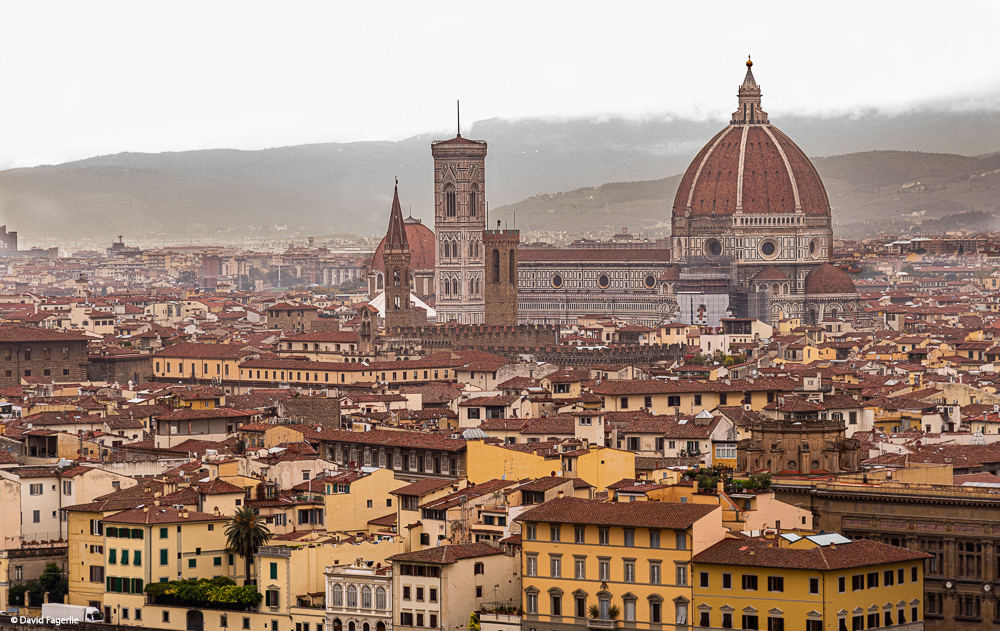
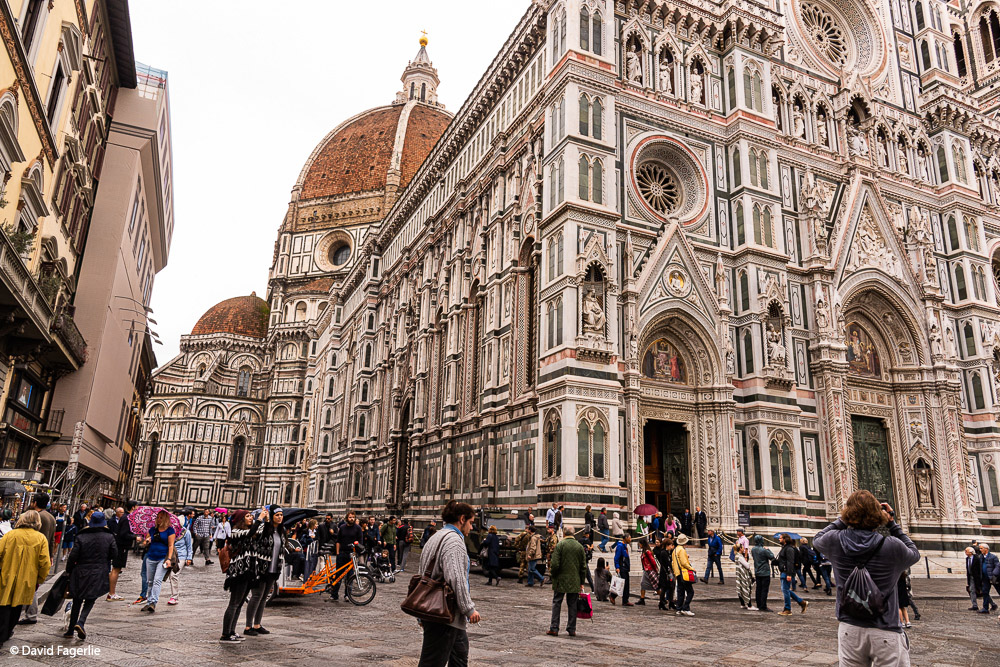
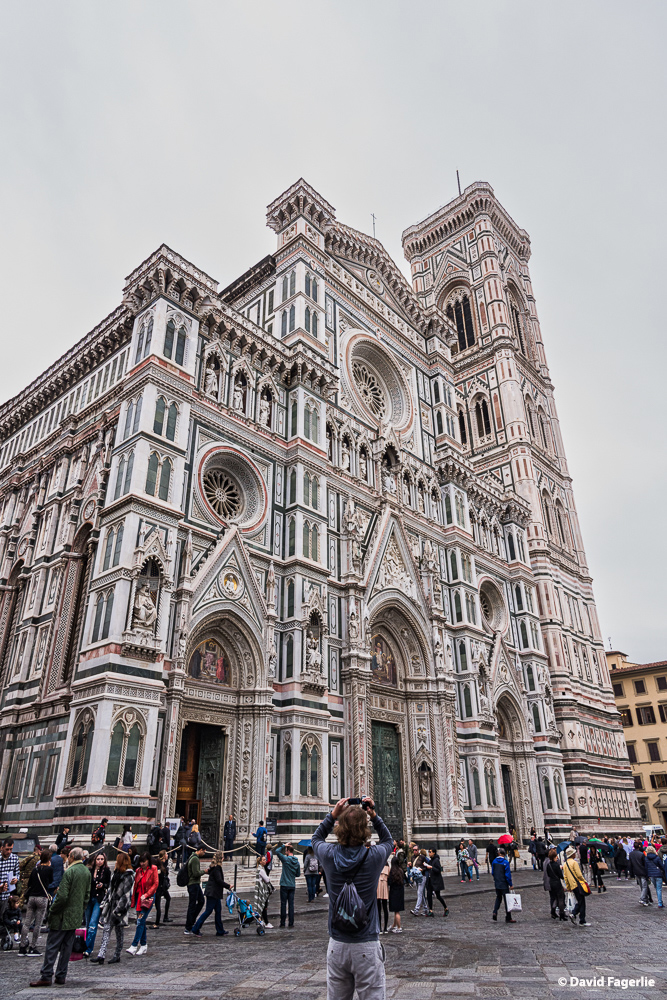
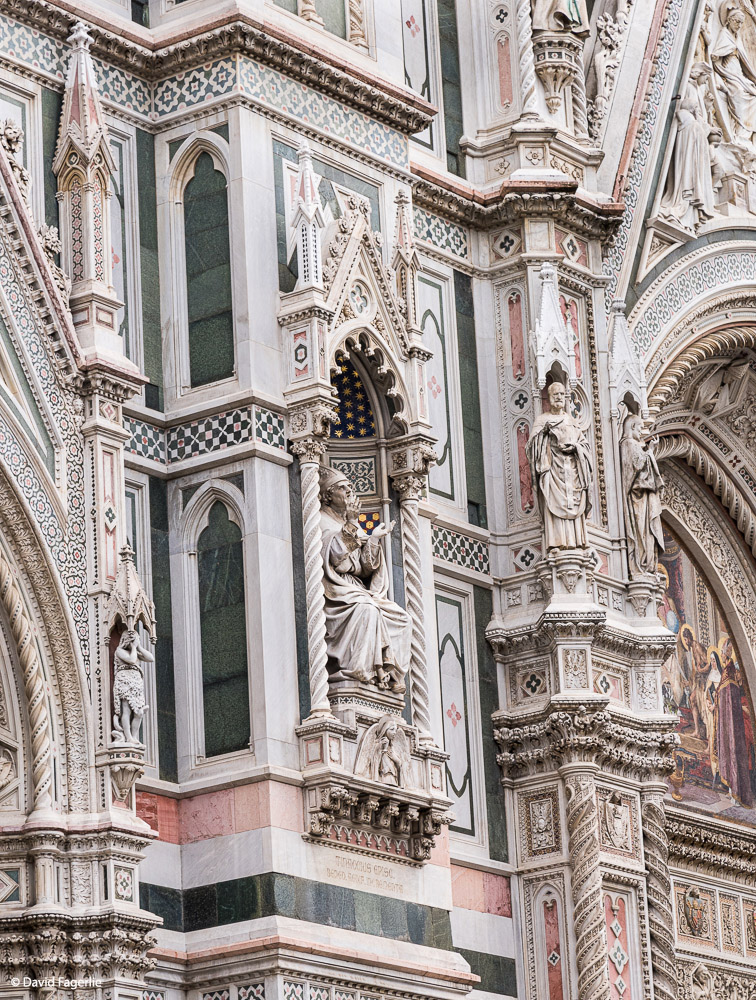
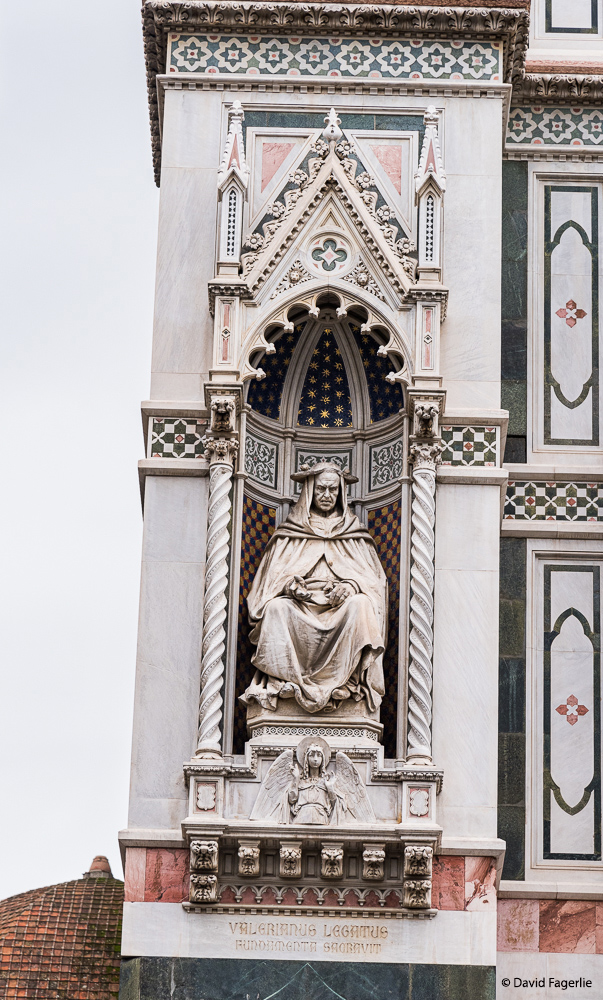
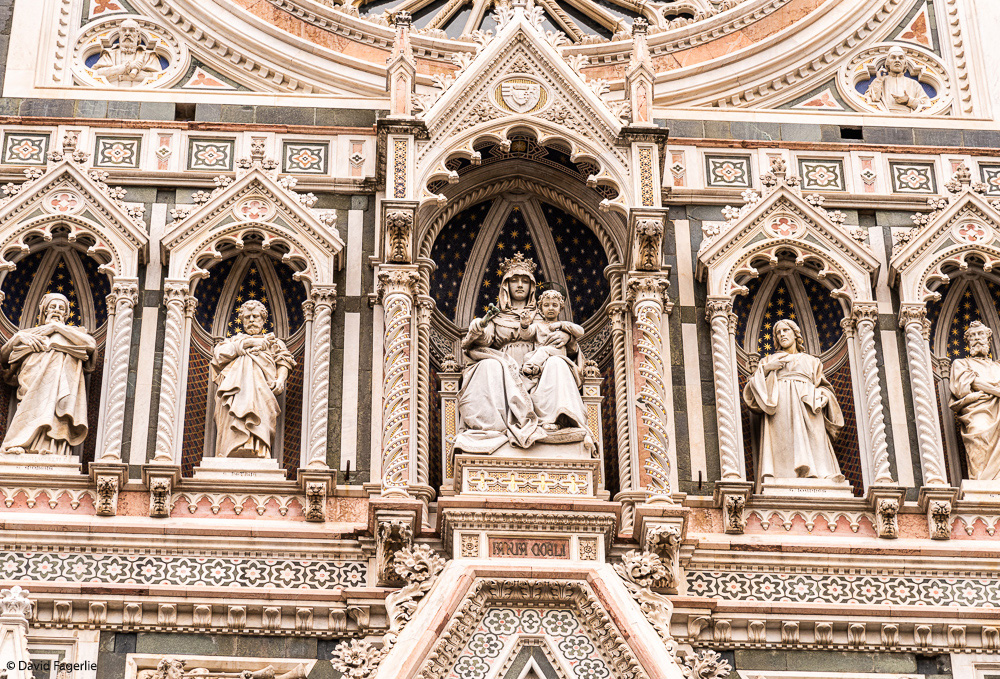
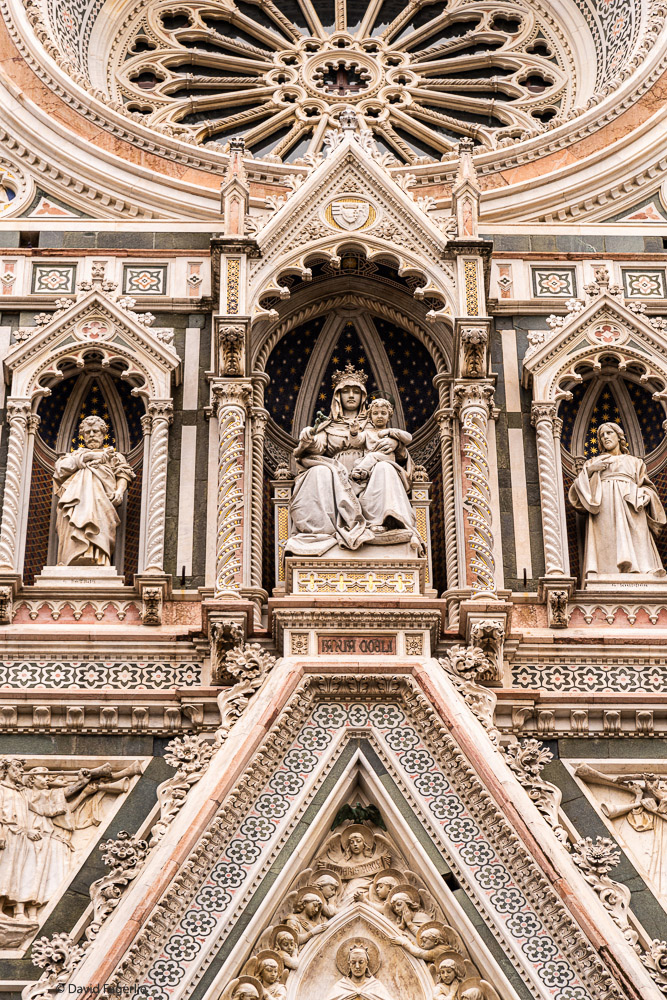
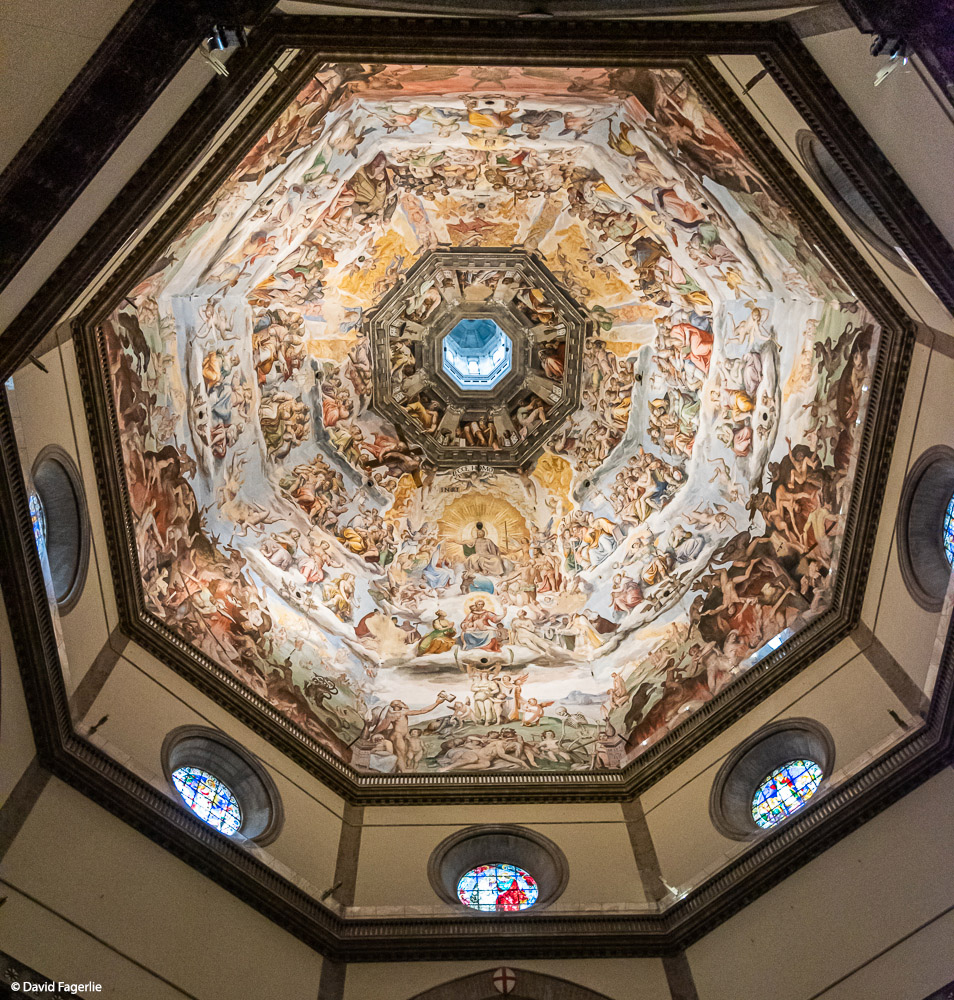
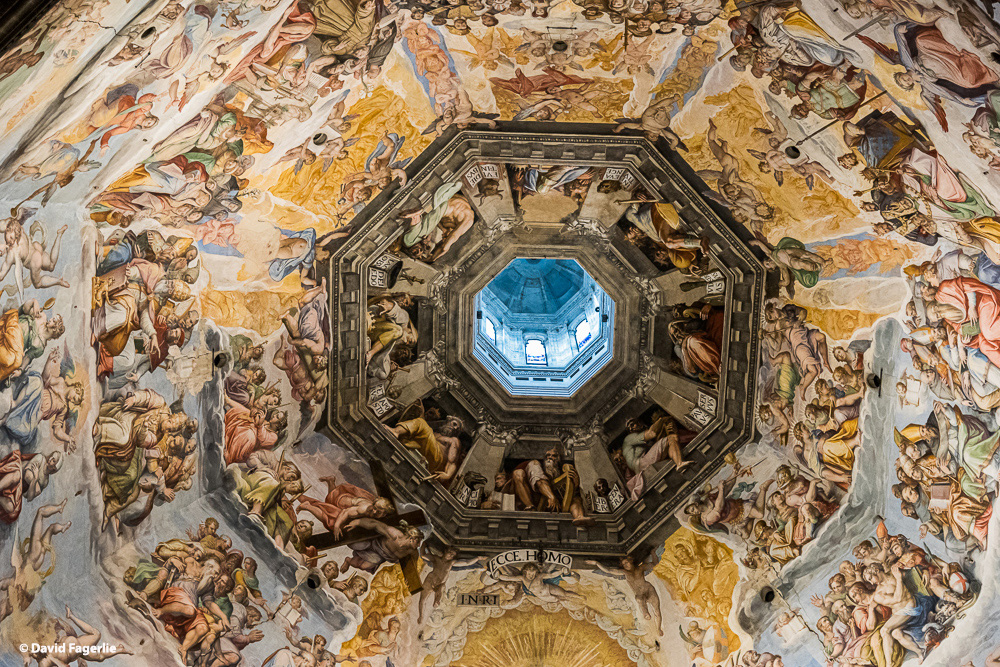
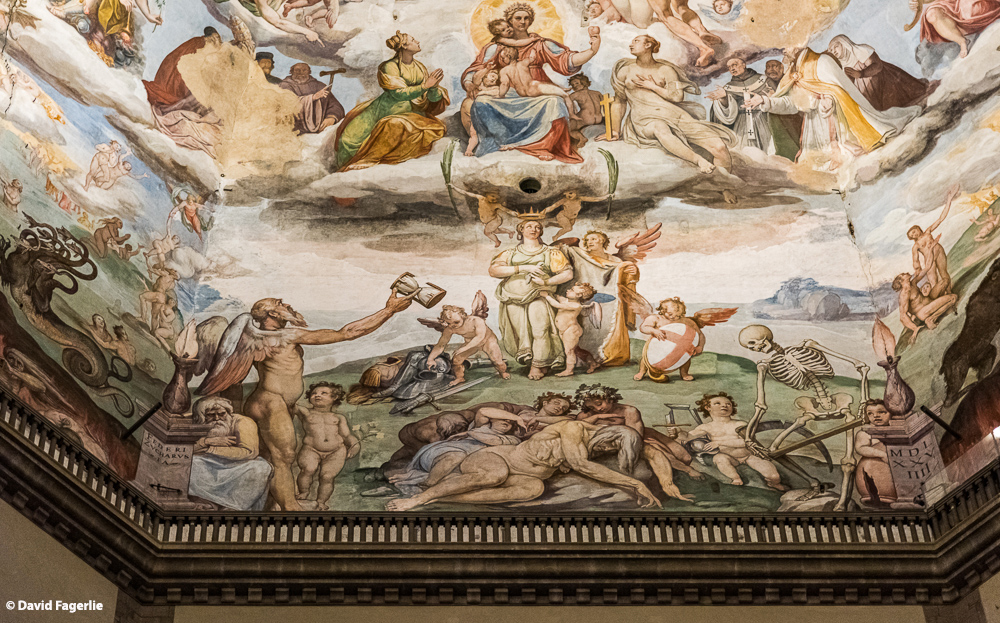
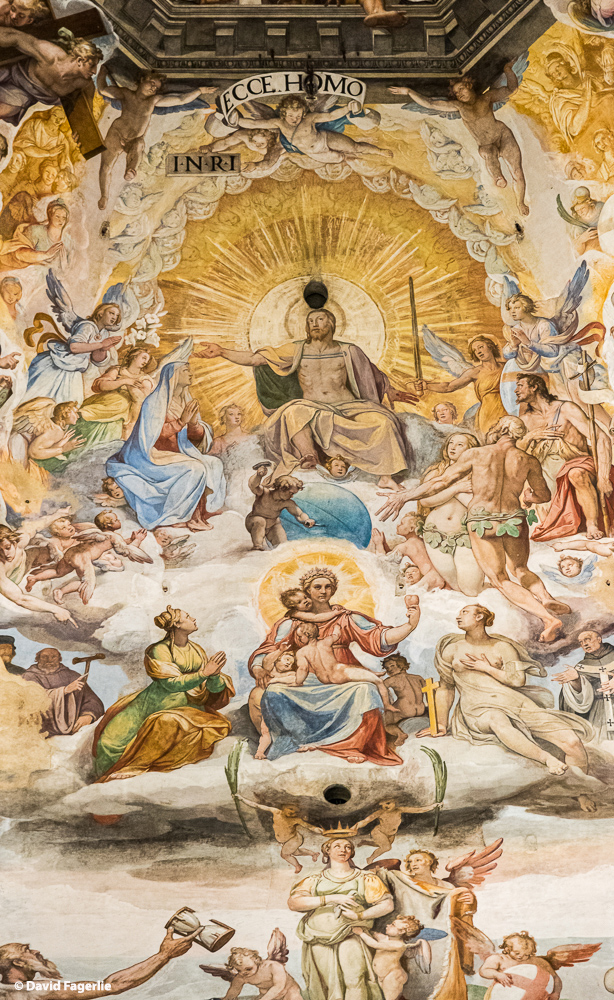
Just 800 meters from the Duomo is the Basilica di Santa Croce (Basilica of the Holy Cross), also designed by Filippo Brunelleschi. I knew nothing about the basilica when I happened upon it; but, I was halted by its beauty. It is the principal Franciscan church in Florence. The basilica is located on the Piazza di Santa Croce. At the time the site was selected it was a marshland outside of the city walls. Groundbreaking for the basilica was sometime in 1294 or 1295 and construction was completed in 1385. The piazza is the burial place of luminaries including Michelangelo, Galileo, Machiavelli, the poet Foscolo, philosopher Gentile and composer Rossini. Thus, it is known as the “Temple of the Italian Glories.”
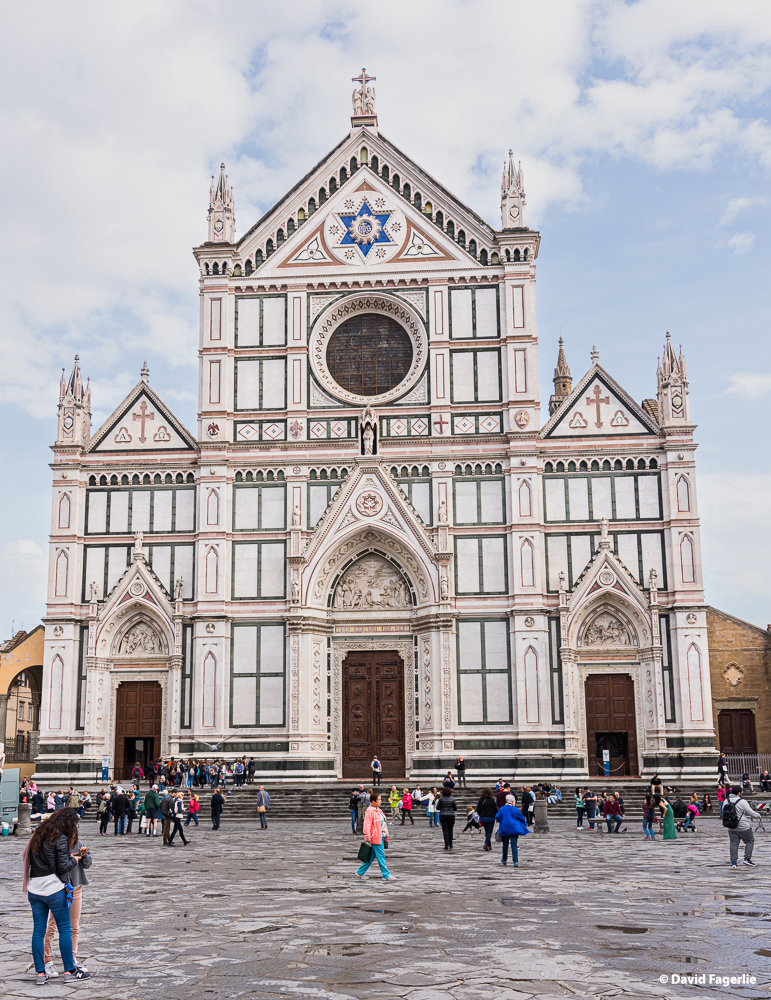
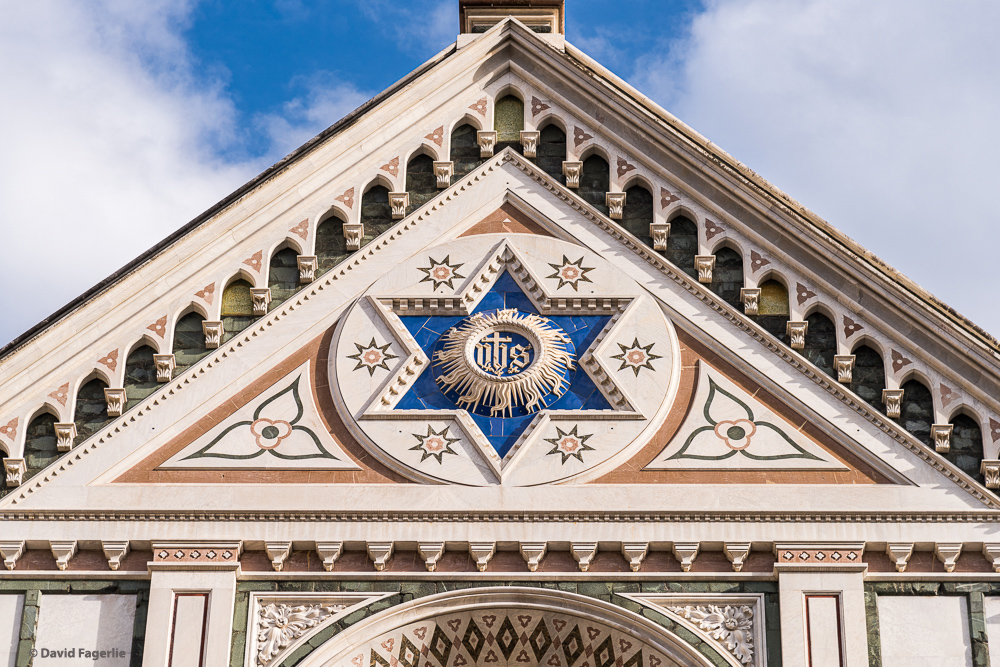
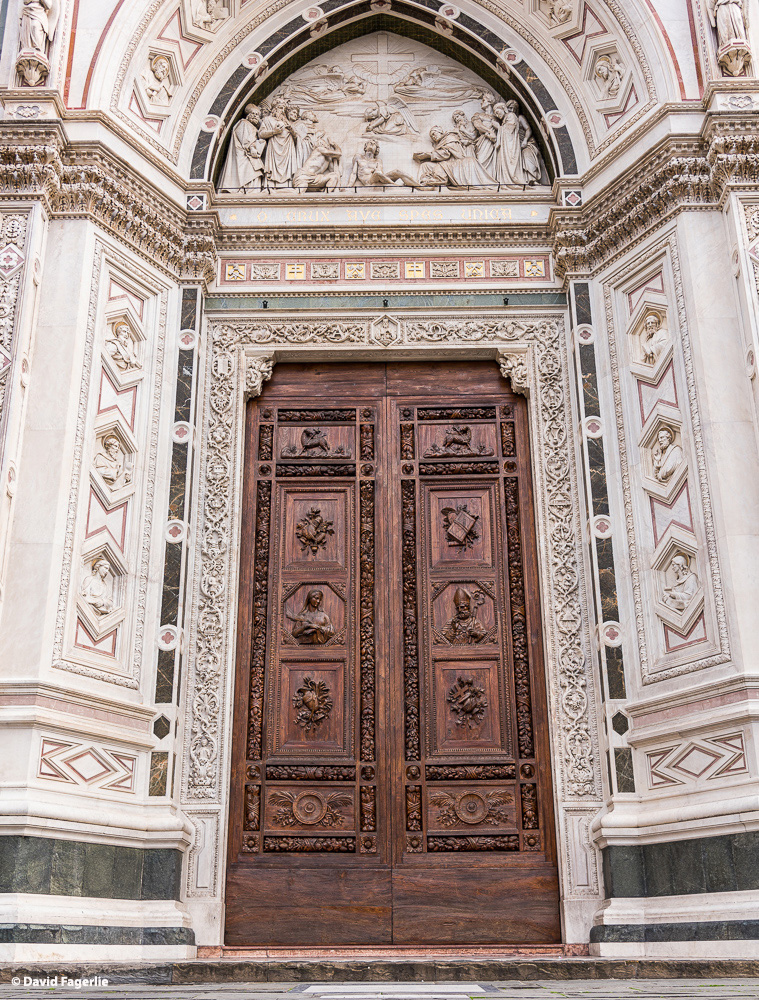
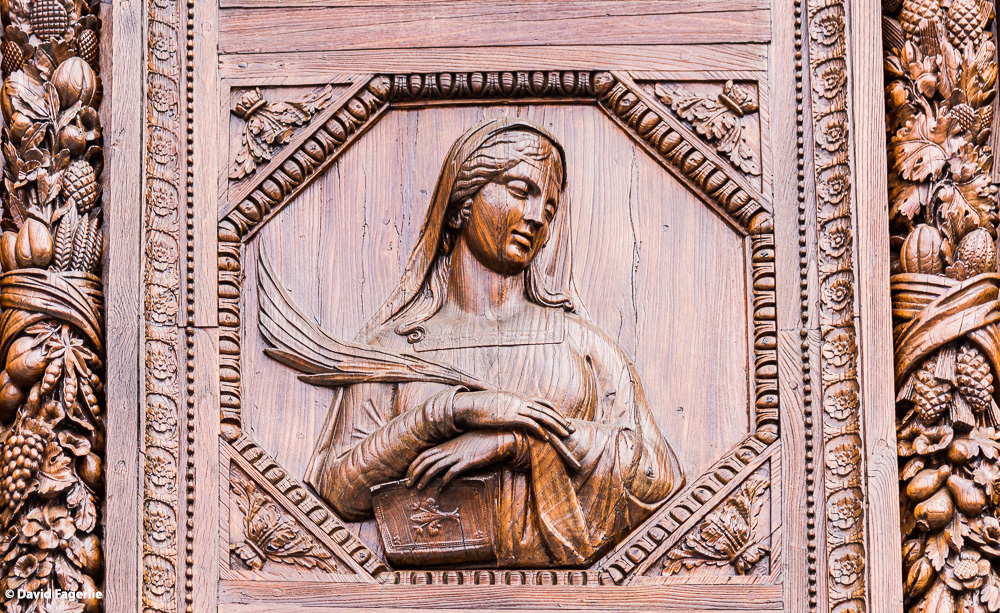
Florence is a city of art with a worldclass reputation, especially for art of generations past. In the main square in the center of the historic district, the Piazza Della Signoria, there are some of the world’s most important sculptures. The Abduction of a Sabine Woman, also known as Rape of the Sabine Women, was created 1579-1583. It was created by Flemish sculptor (and architect) Giambologna. Giambologna achieved widespread fame in his lifetime and this piece is considered a masterpiece. It represents a rape incident from the early history of Rome.
“It was the first of Giambologna's statues for Francesco de’ Medici of Tuscany and is produced in the Mannerist style associated with the Italian High Renaissance. It consists of three full figures and was carved from a single block of white marble. It was not given a title until after it was completed. Giambologna was typically non-committal about the subject matter of his work, and in this instance wanted to produce a large, monumental sculpture that would display his virtuosity.” – Wikipedia
To the right of this work another piece by Giambologna, Hercules and the Centaur Nessus, was completed in 1599.
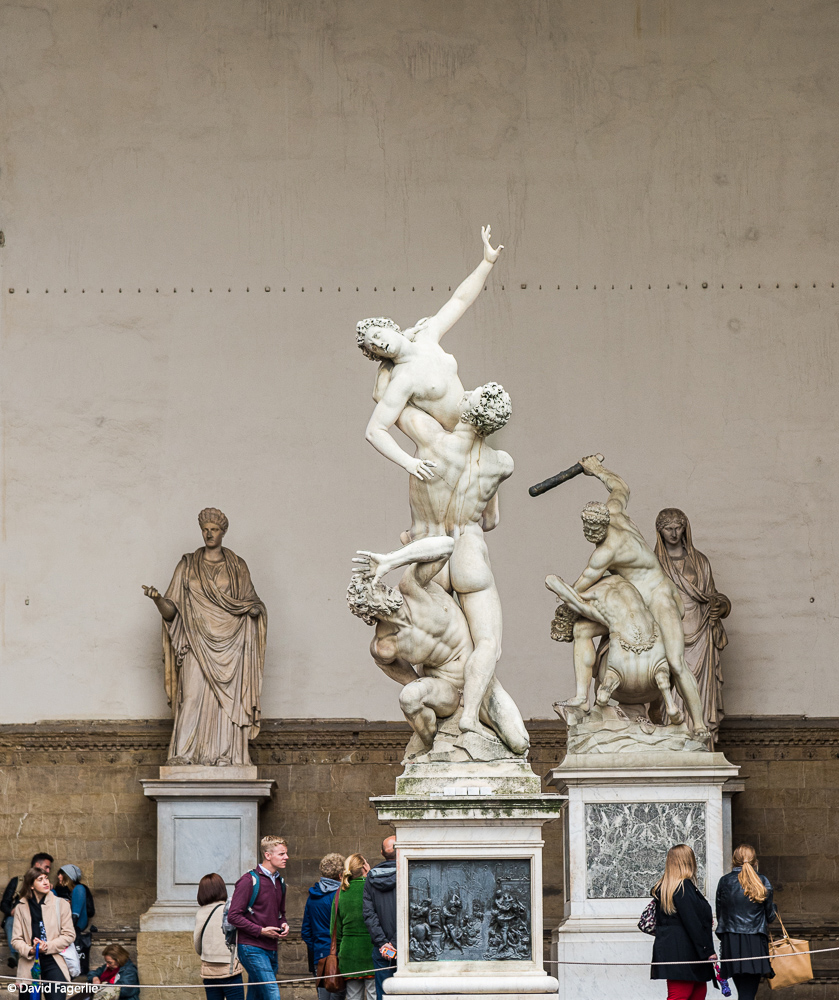
Perseus with the Head of Medusa is one of my favorite sculptures in the piazza. This bronze sculpture was created by Benvenuto Cellini between 1545 and 1554. It was commissioned by the second Florentine duke, Duke Cosimo I de' Medici and unveiled to the public where it now stands on April 27, 1554. You may recall that the scene represents the mythical story of Perseus beheading Medusa, a hideous woman whose hair had been turned to snakes and anyone who looked upon her was turned to stone.
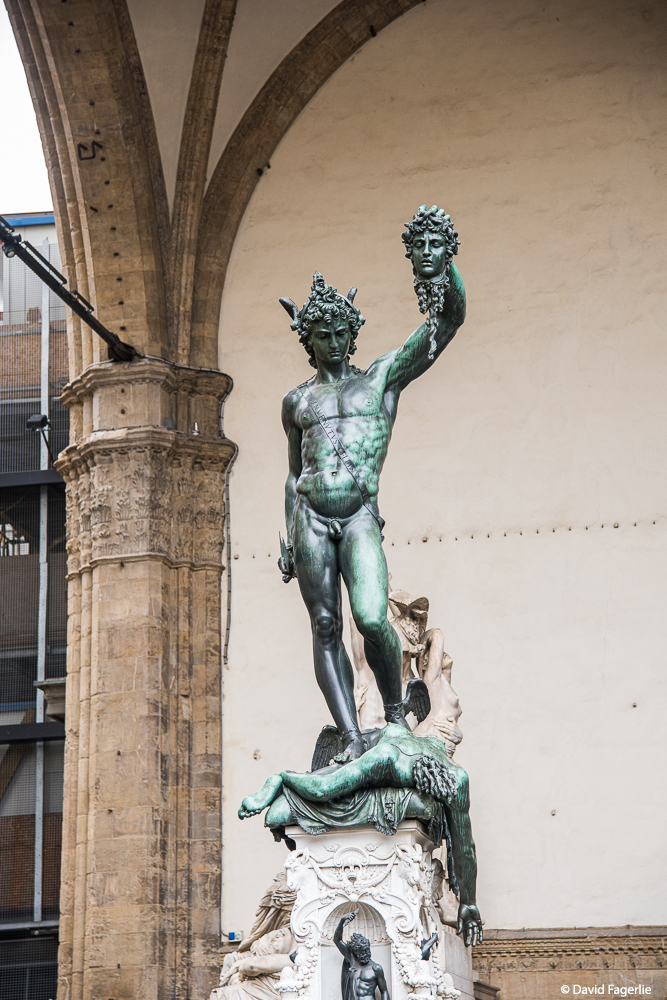
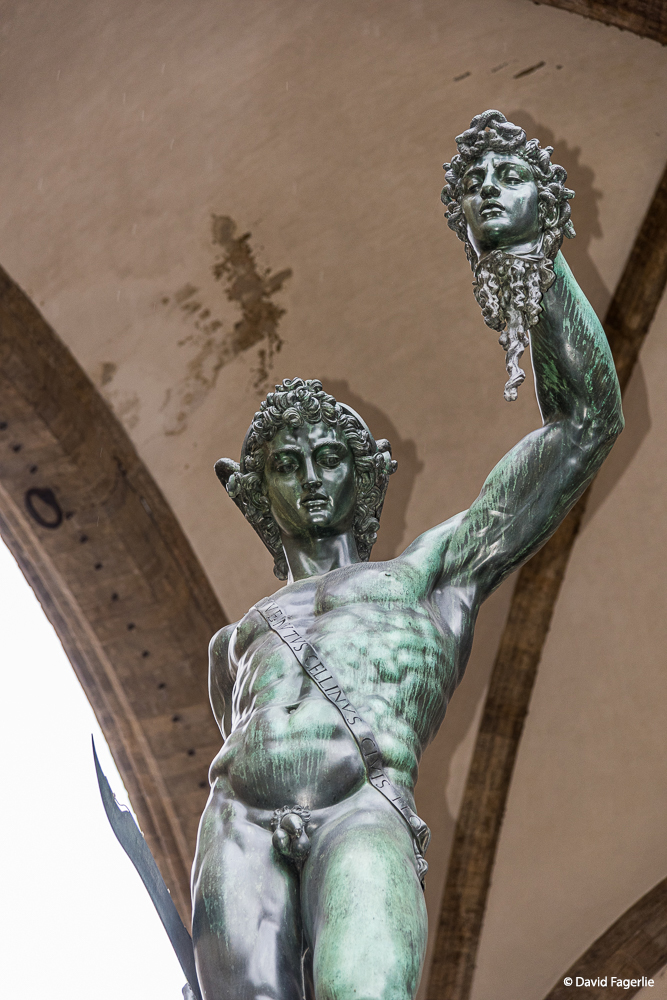
Neptune, a fountain and one of the larger sculptures in the piazza, was designed by Baccio Bandinelli but created by Bartolomeo Ammannati between 1560 and 1574. It was also commissioned by Cosimo I de' Medici in 1559 to celebrate the marriage of Francesco de’ Medici I to Grand Duchess Joanna of Austria.
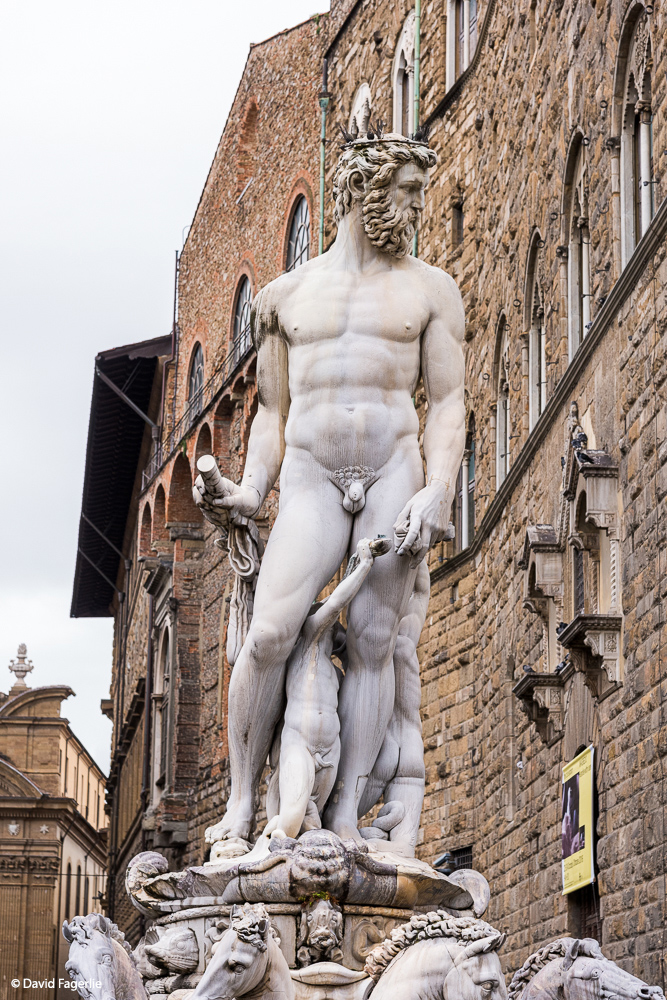
Nearby, at the Piazza di Santa Croce, is a sculpture of Dante Alighieri, built by Enrico Pazzi in 1865 to celebrate the 600 year anniversary of the birth of poet Dante. Dante was born in or around 1265 and died in 1341. He was a poet, statesman and philosopher. His poem Divine Comedy is considered by many to be the most important poem of the Middle Ages. I did not know who was the subject of the sculpture when I photographed it; I liked its form and attitude.
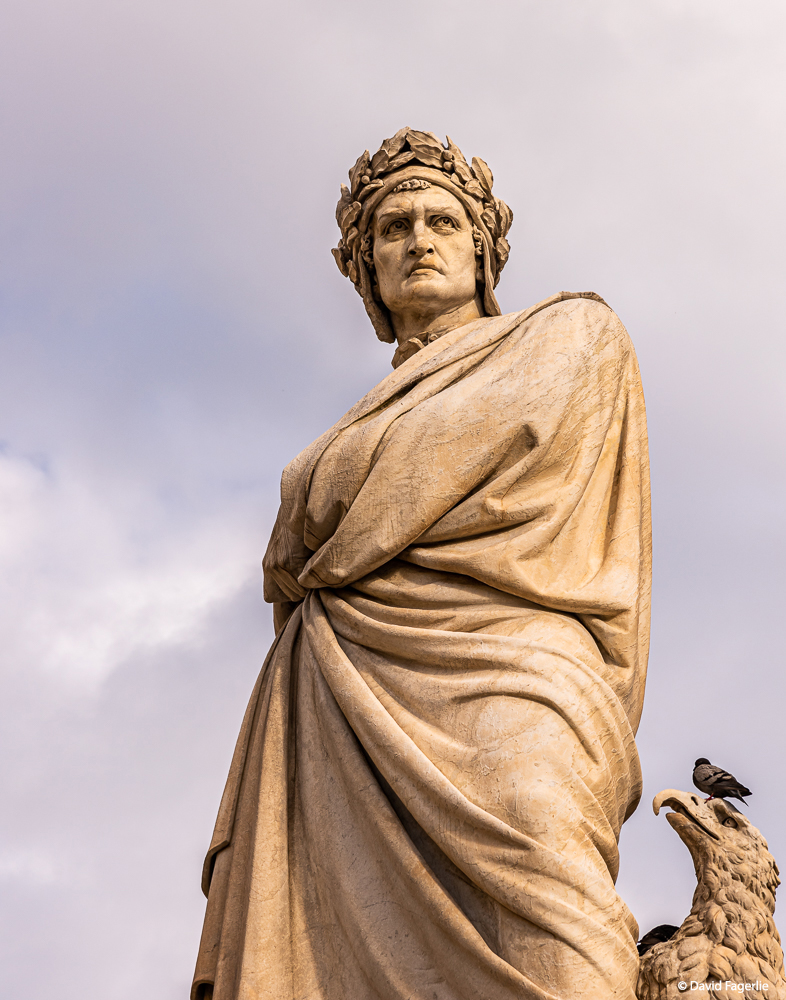
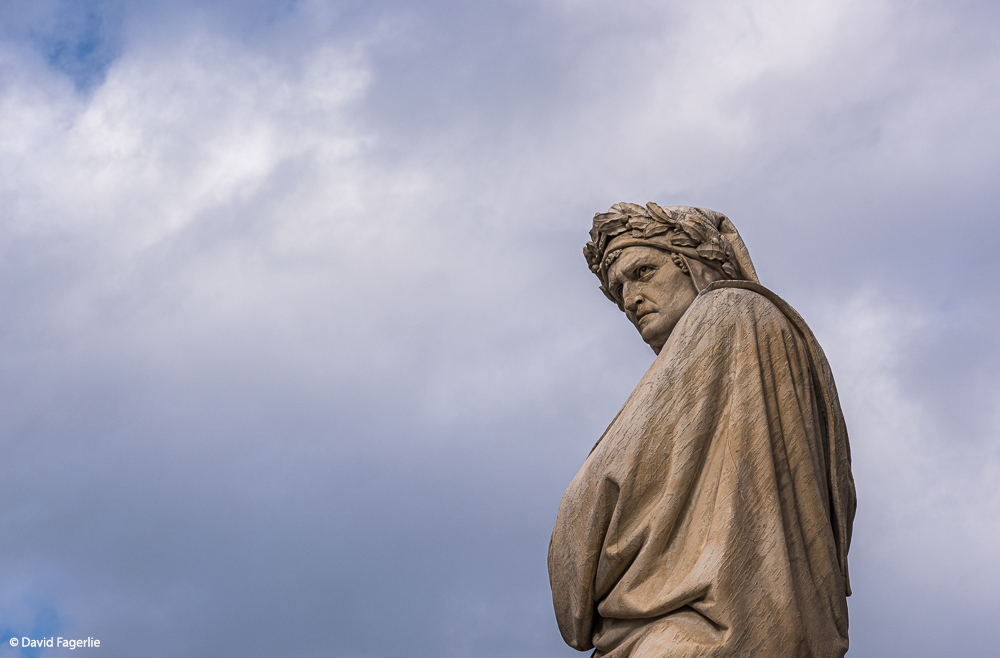
Florence is an intensely interesting and historical city with old structures everywhere and whimsical as well as serious art. If you look closely at the upper-right part of the photo of the river you can barely make out a copy of Michelangelo’s David. It was from there that I photographed the cityscape.
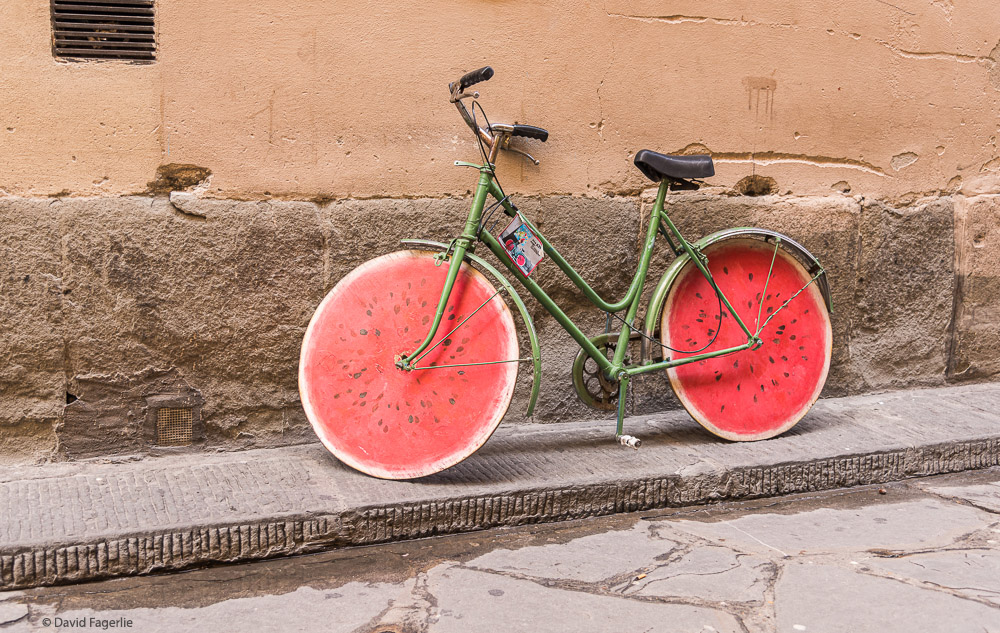
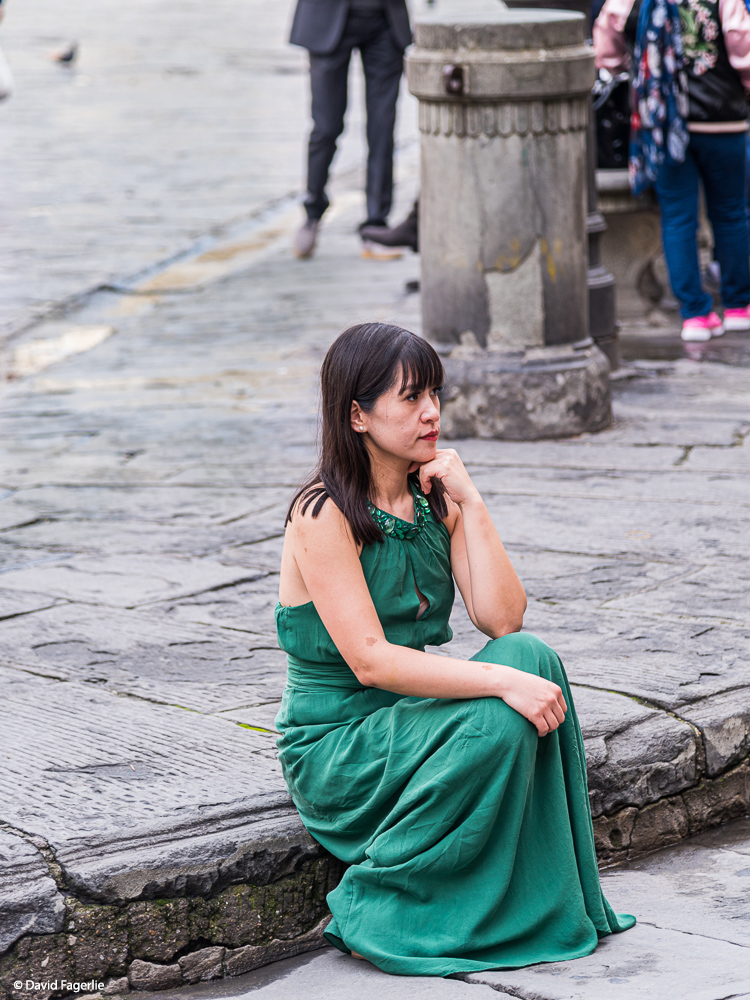
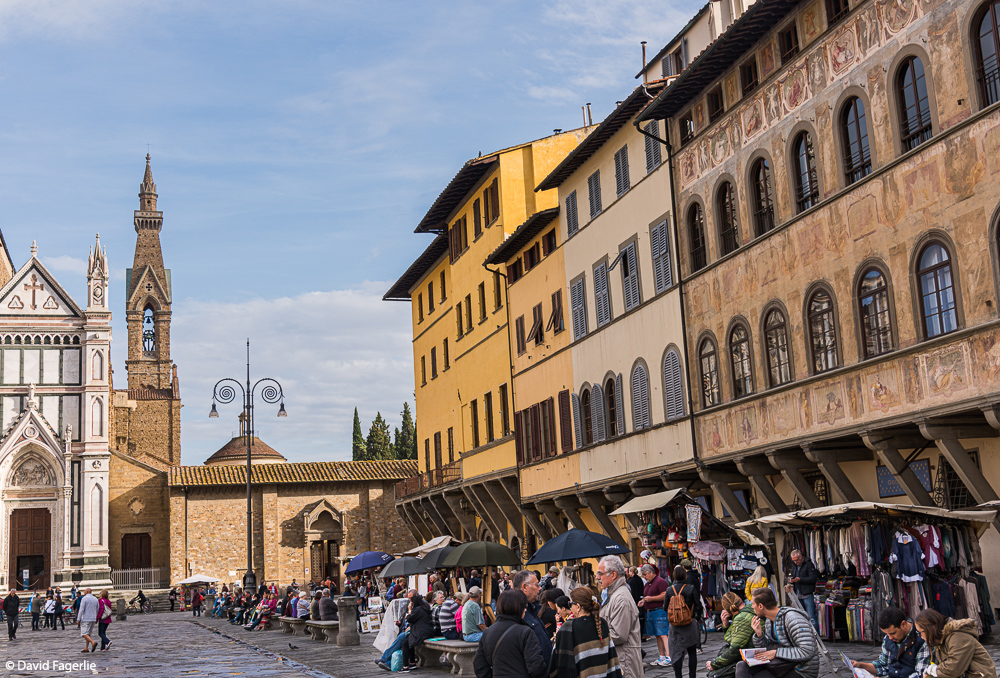
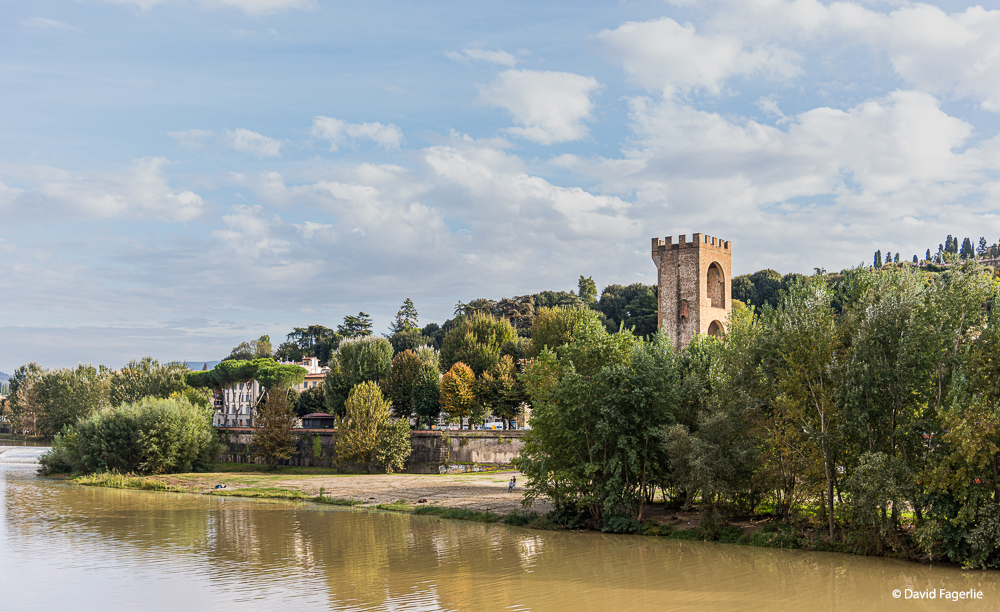
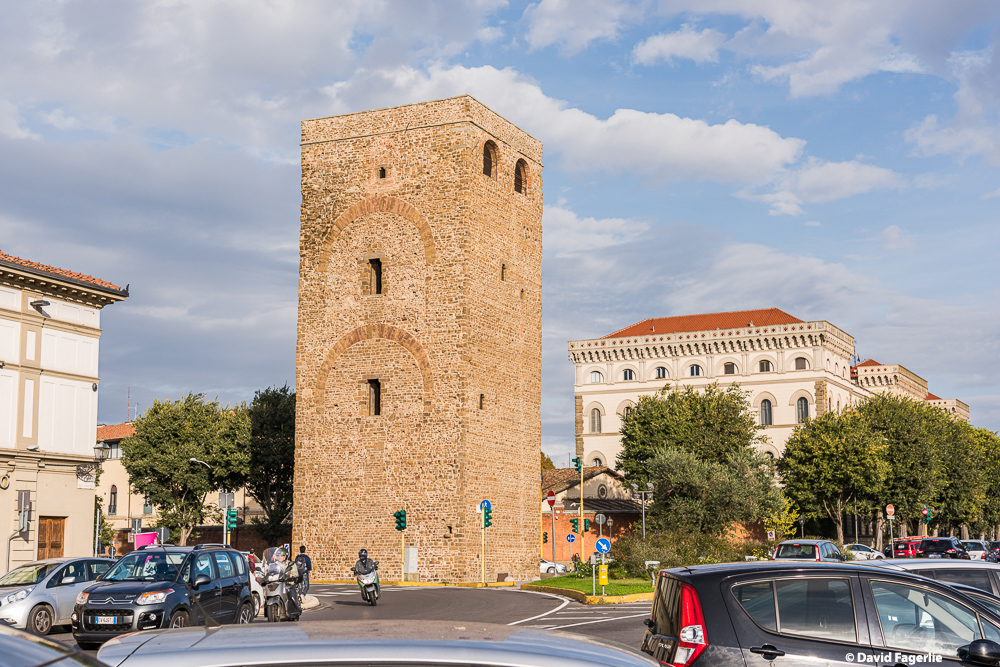
The Galleria dell’ Accademia features the work of Michelangelo including some of his unfinished works. He believed he was revealing the image that already existed in the stone. One gets a sense for that observing his unfinished works. Below is a bust of Michelangelo and two examples of unfinished sculptures.
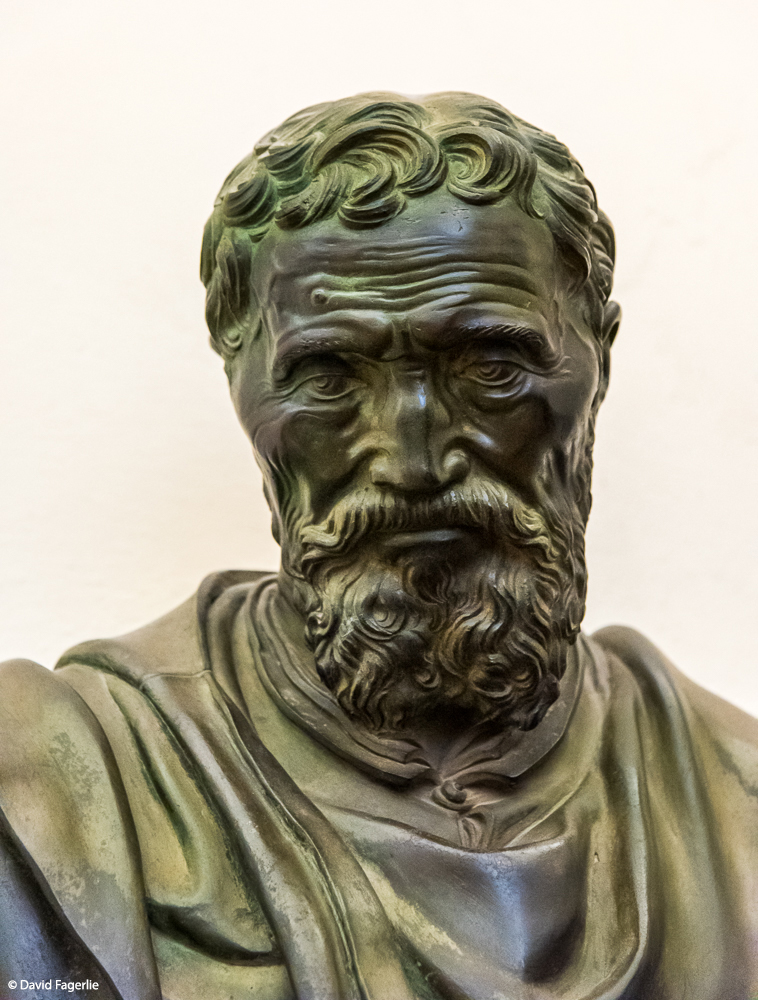

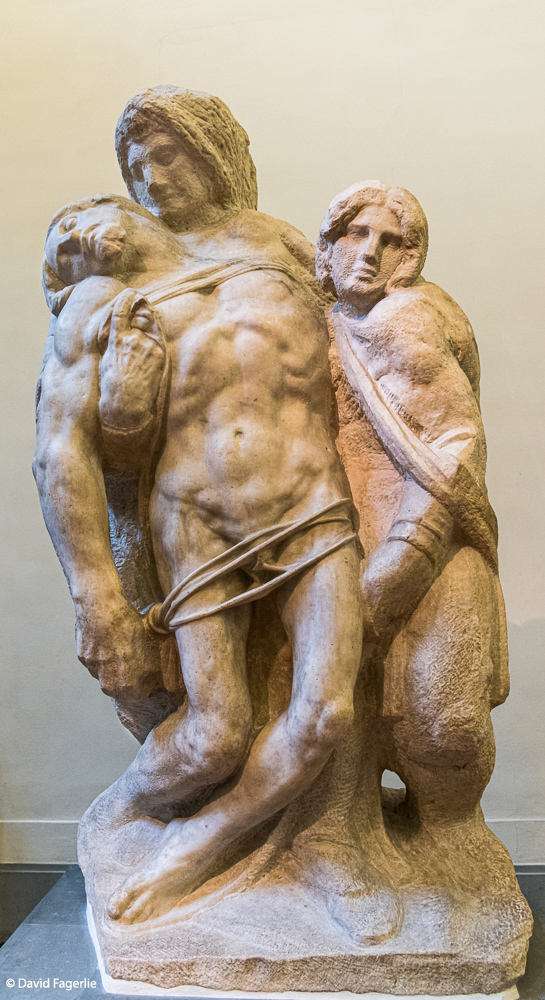
Michelangelo di Lodovico Buonarroti Simoni (1475-1564) is generally considered the most influential artist of his time. Some scholars suggest he was the greatest artist of all time and a number of his sculptures and paintings rank as among the most famous in existence. Michelangelo was the first Western artist whose biography was published while he was still living. He sculpted both the Pietà, which you saw in my chapter on the Vatican, and his famous David before he was thirty years of age.
There are many copies of the David in Florence and elsewhere. The original is in the Galleria dell’ Accademia and it is a sight to behold. Standing seventeen feet tall and on top of a pedestal it towers over spectators in its own room. The David was originally commissioned as one of a series of statues to be installed along the roofline on the east side of the Duomo. Instead, the more than six-ton statue was placed in a public square and unveiled to the public on September 8, 1504. It was moved to the Galleria dell’ Accademia in 1873 to protect it from damage. The David is atypical of Michelangelo’s works in that the head and hands are oversized.
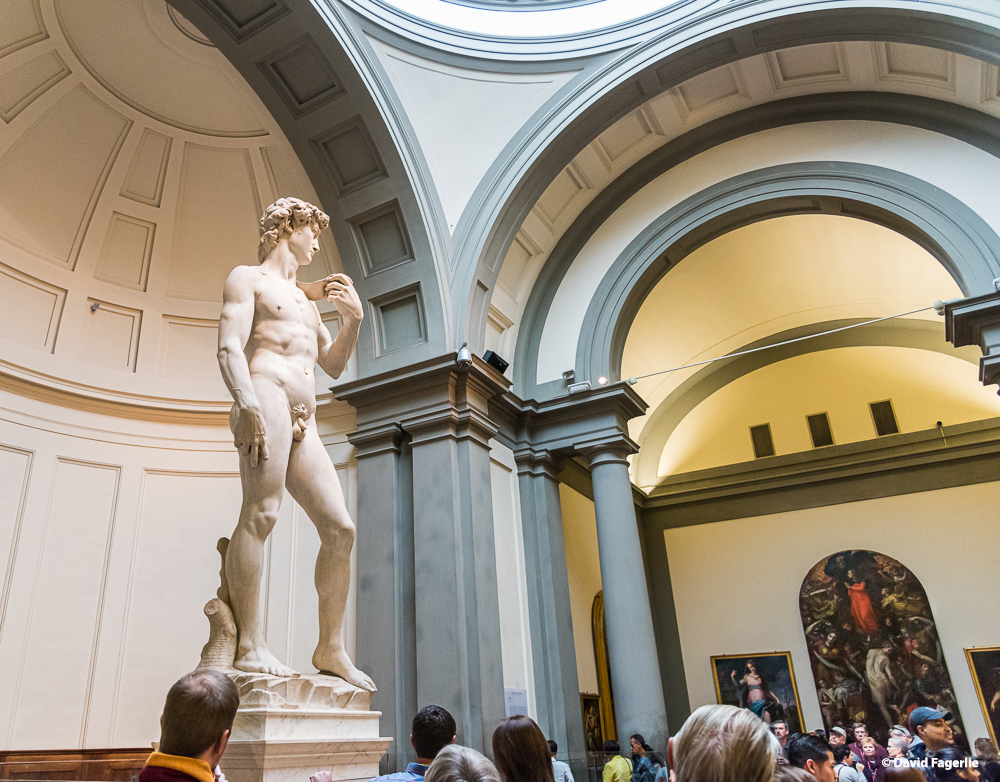
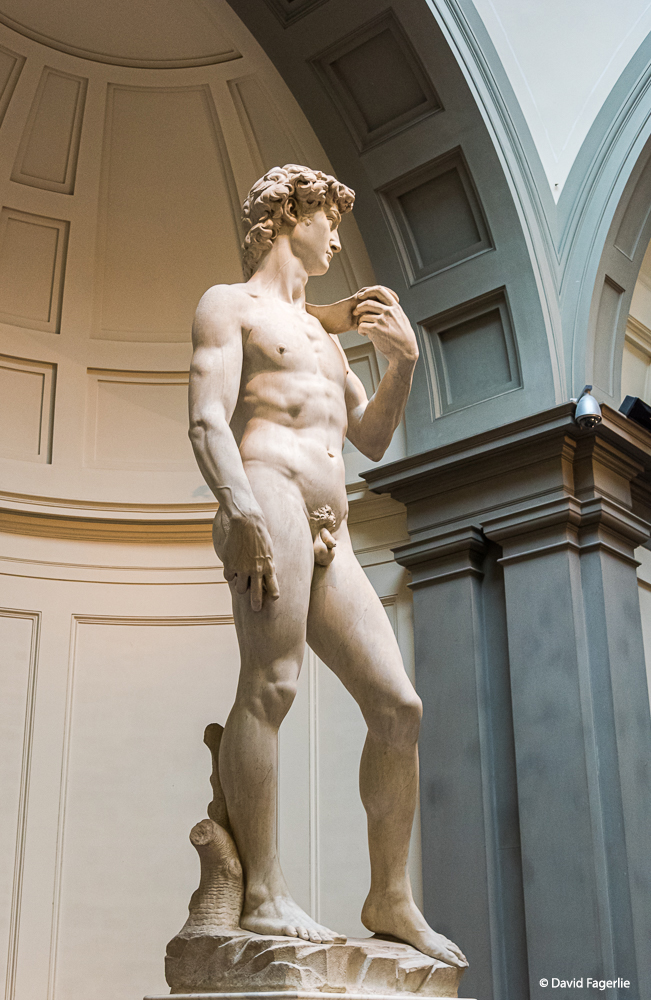
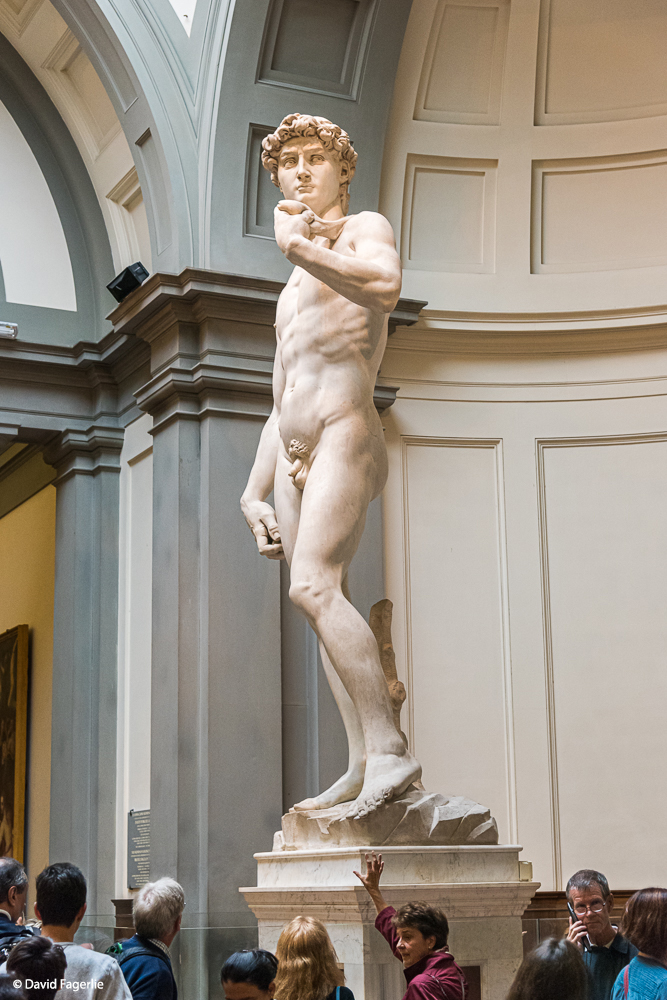
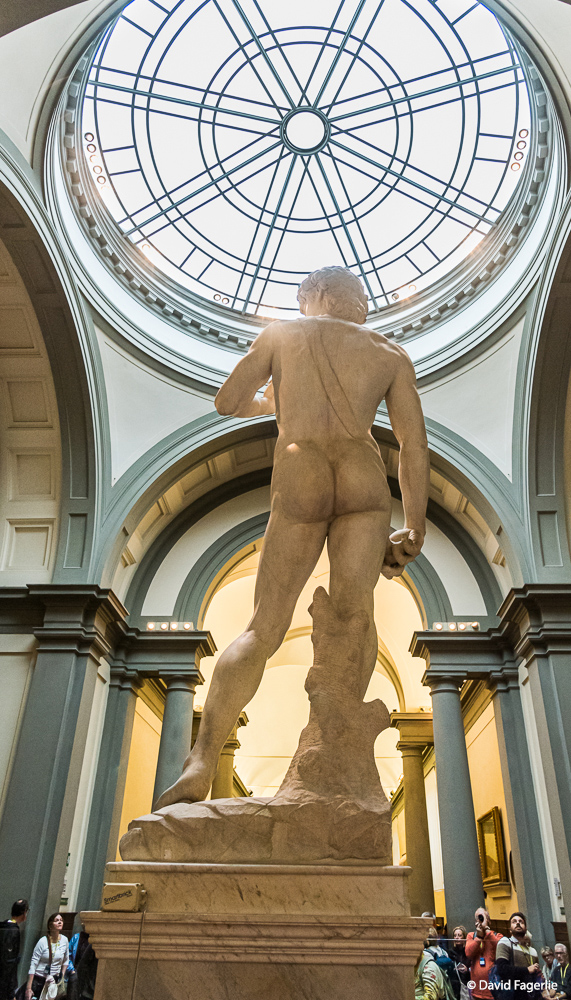
The block of marble that Michelangelo used came from Carrara in the Alps of northern Tuscany. Even from a roadside miles away white veins of marble can be seen in the mountains.
Any description of Florence would be incomplete without comments about the Medici of Florence, one of the most influential and powerful families in human history. Their coat of arms of balls on a shield can be seen throughout northern Italy.
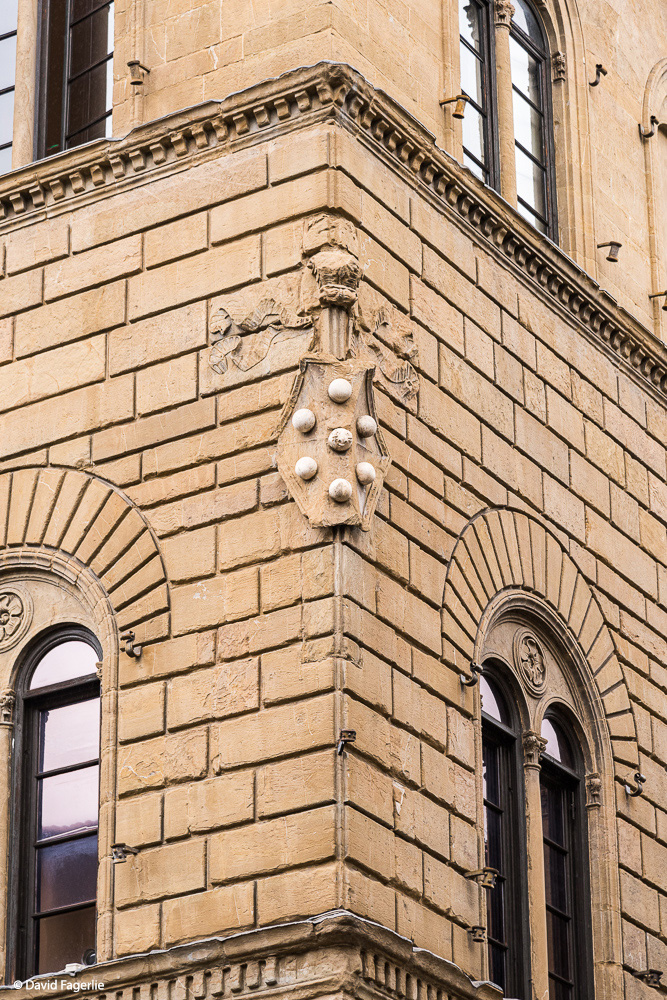
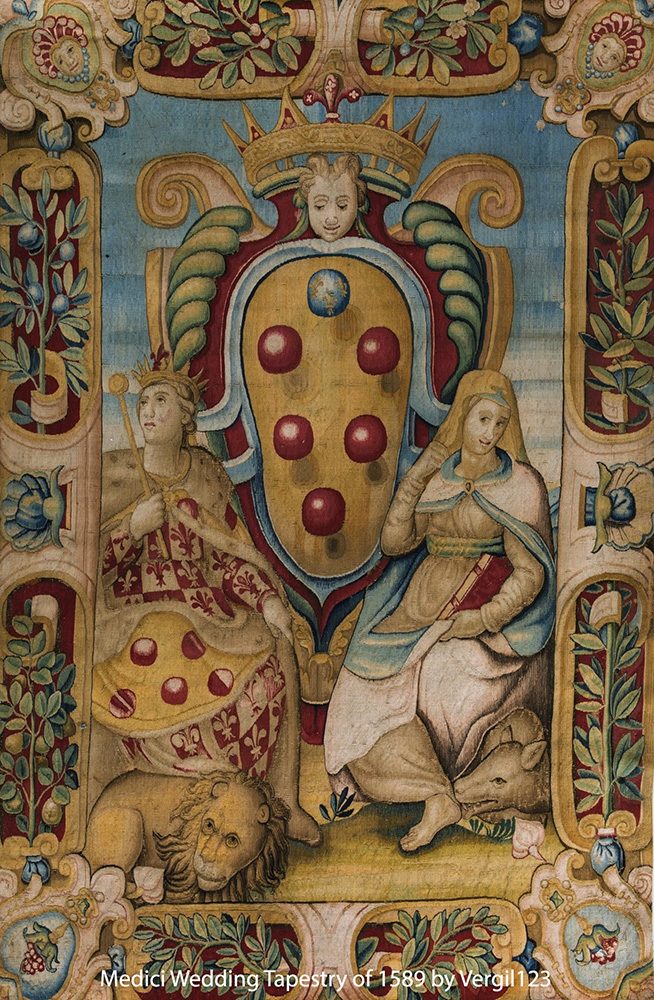
The House of Medici ascended to prominence under Cosimo de’ Medici in the first half of the 15th century.
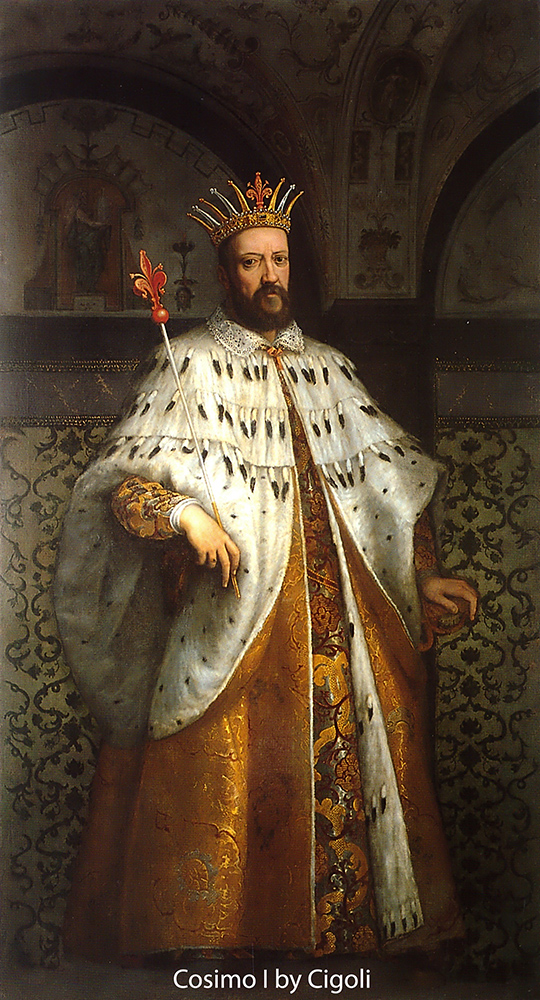
The Medici produced four popes and two queens of France. In 1532 the family acquired the hereditary title Duke of Florence. In 1569 the title was elevated to the Grand Duchy of Tuscany.
Medici wealth originated from the textile trade. The Medici Bank, founded in 1397, was one of the most prosperous institutions in Europe until its fall in 1494. “The Medici family can claim to have funded the invention of the piano and opera, financed the construction of Saint Peter’s Basilica and Santa Maria del Fiore, and they were patrons of Brunelleschi, Botticelli, Leonardo de Vinci, Michelangelo, Raphael, Machiavelli, Galileo and Francesco Redi among many others in the arts and sciences." – Wikipedia
Florence American Cemetery and Memorial
I close this chapter with some photos of the Florence American Cemetery and Memorial. There are two American military cemeteries in Italy, this one near Florence and another near Rome. This cemetery includes 4,399 headstones over a 70 acre site and also recognizes 1,409 soldiers that are missing in action.
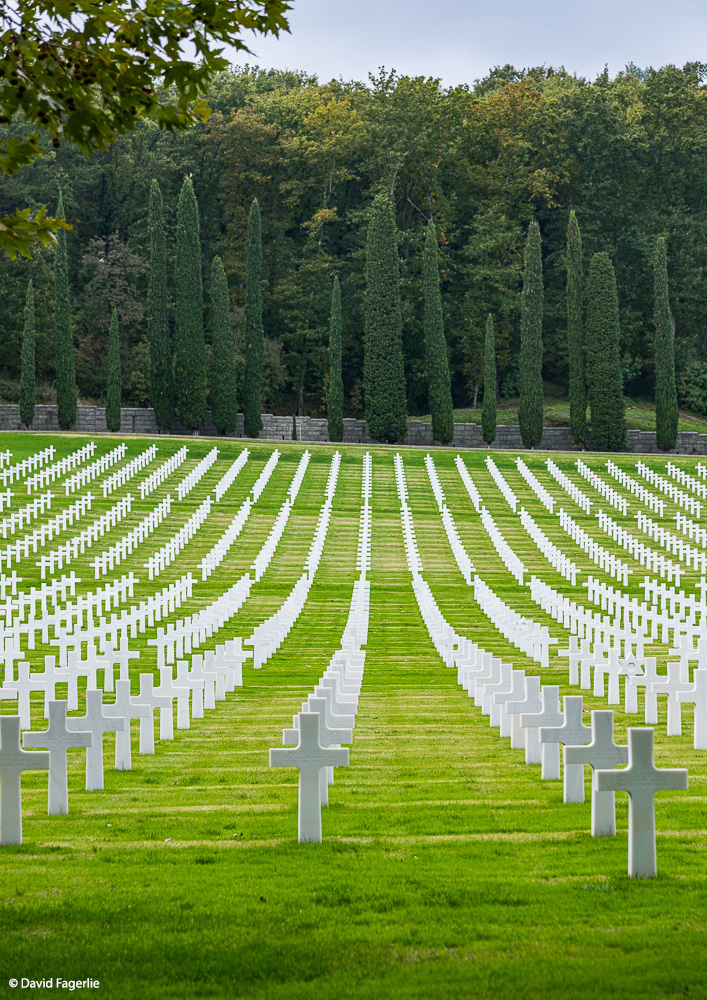
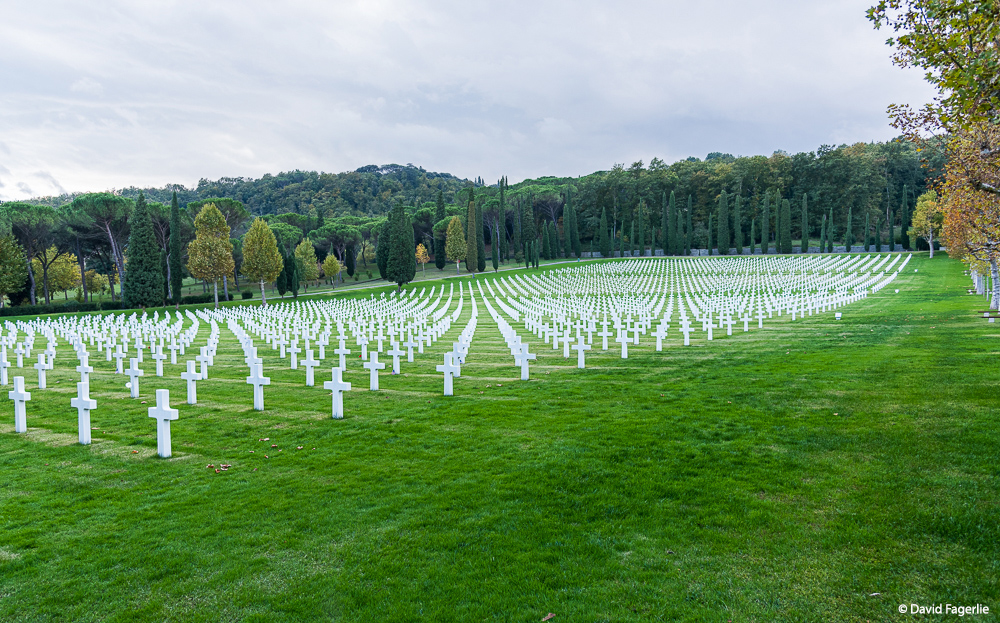
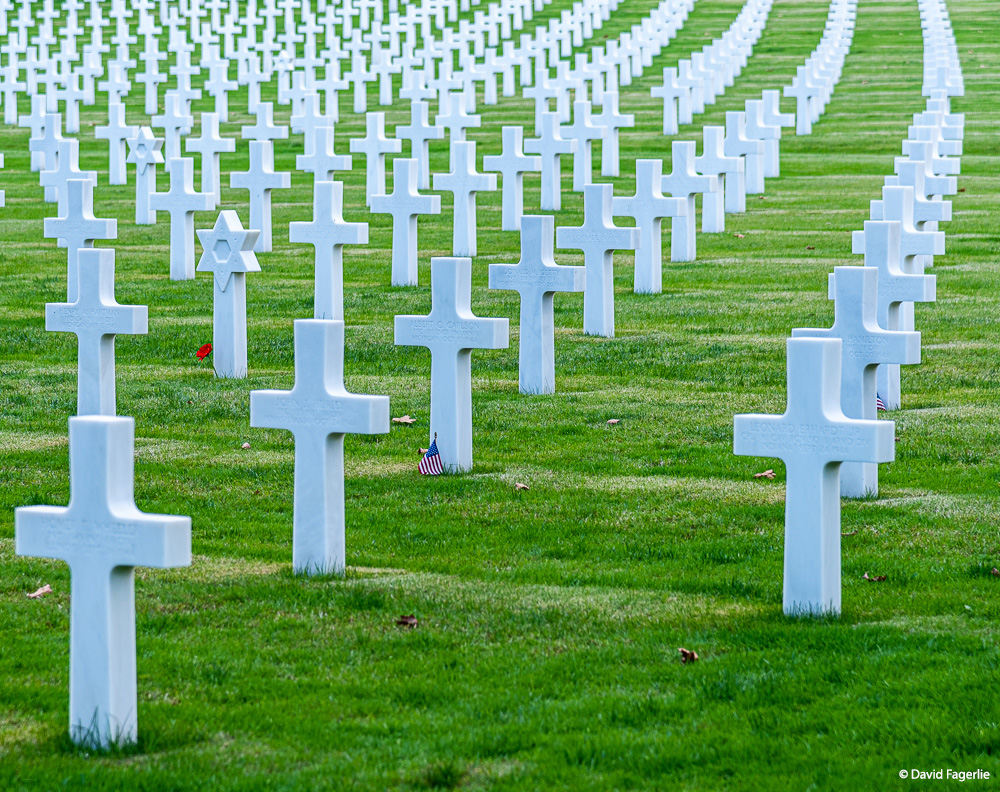
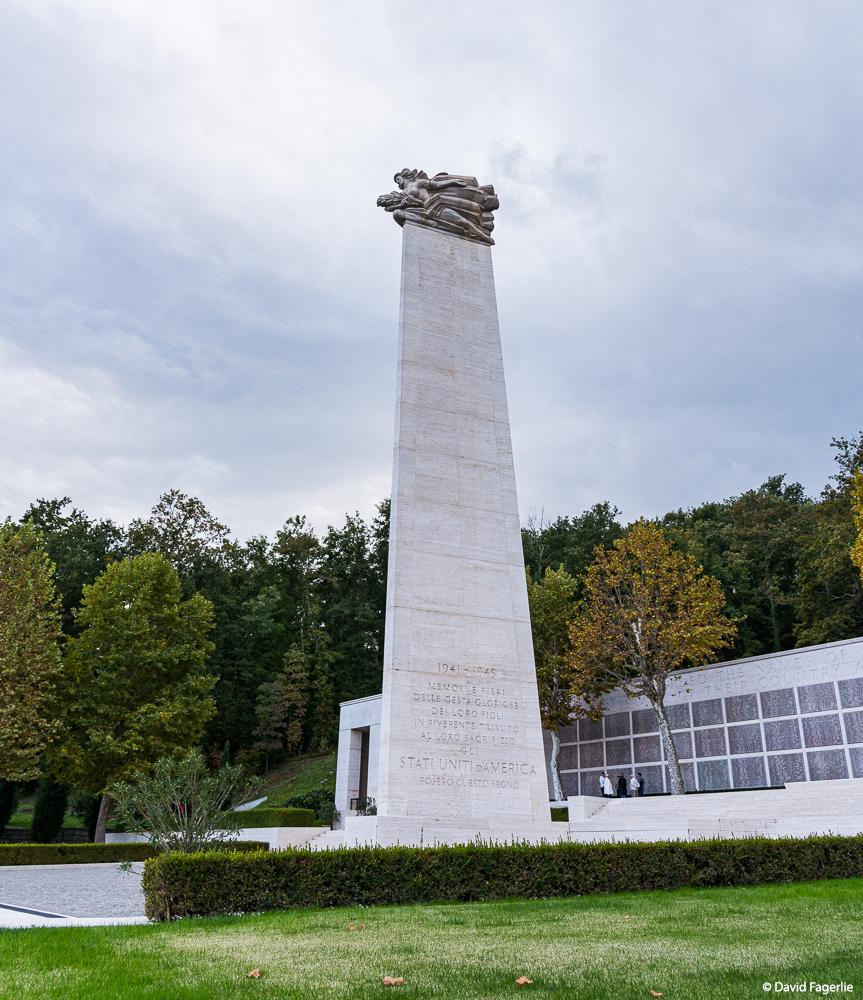
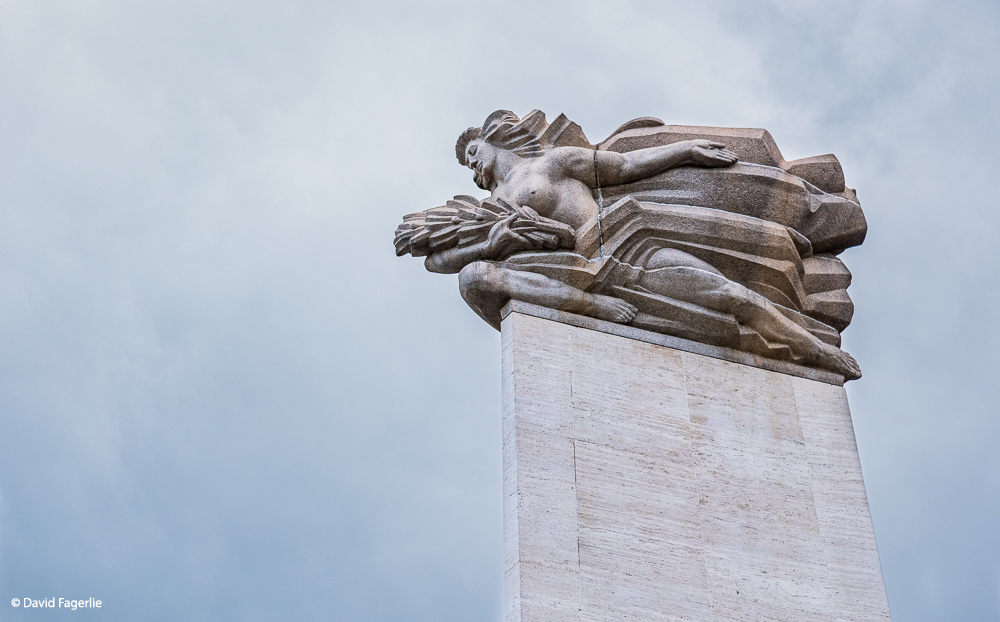
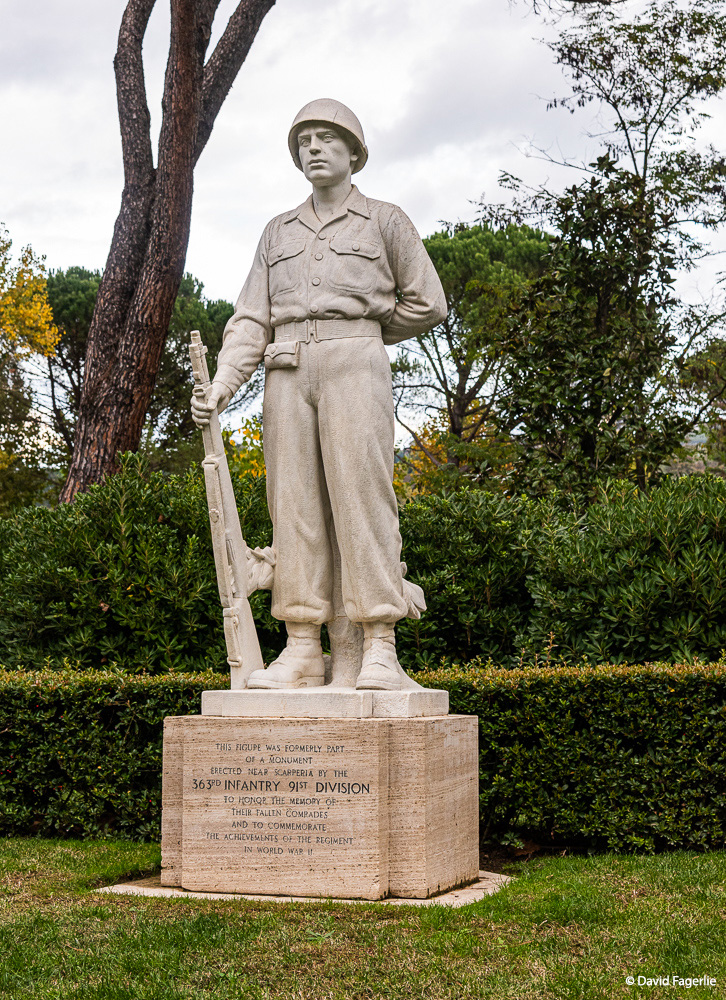
A slide show of higher resolution images is in Galleries. You can access the gallery of this chapter directly by clicking HERE.
Next Monday Patrick Soricone returns to take us to Mantua. Stay safe out there.
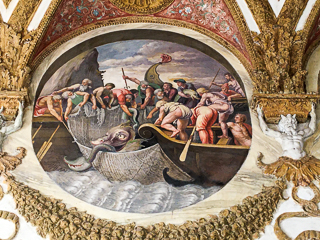
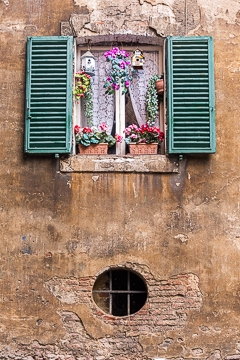
December 17, 2020
Chapter 12: Mantua Gonzaga Dynasty